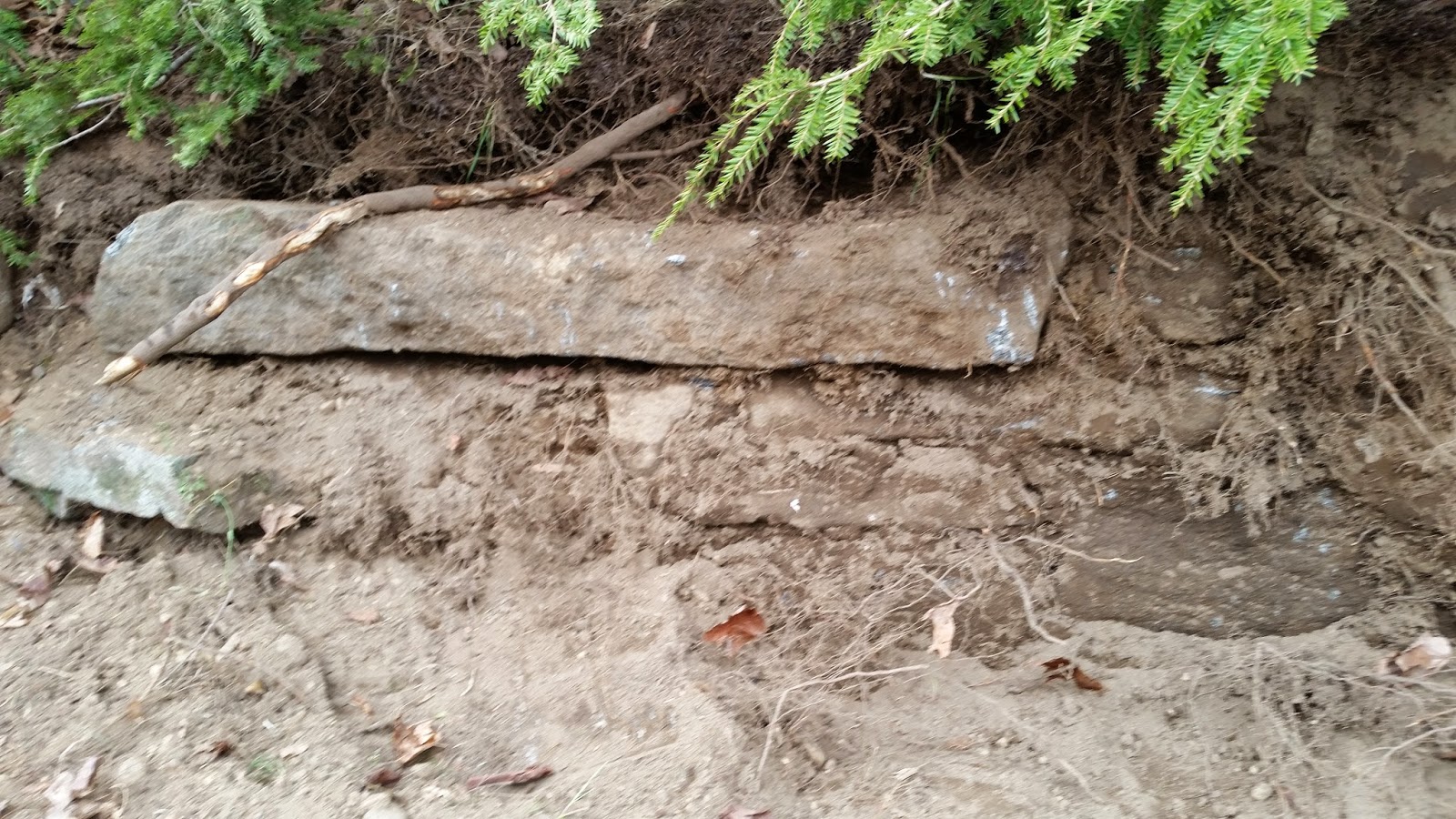When I began to dig out the soil behind the wall, the reason for these narrow stones became clear.
Intersecting the repaired wall at a 45 degree angle, was a previously built and superior retaining wall.
Possibly out of respect for a previous craftsman, the builder of the second wall had simply walled across the face of the existing wall with the above narrow stones.
Altering the line of the wall was not an option, so I dismantled a small section of the original retaining wall and reused the stone in the repaired wall.
I hope the next builder finds the existing wall as fascinating as did I.











.JPG)








